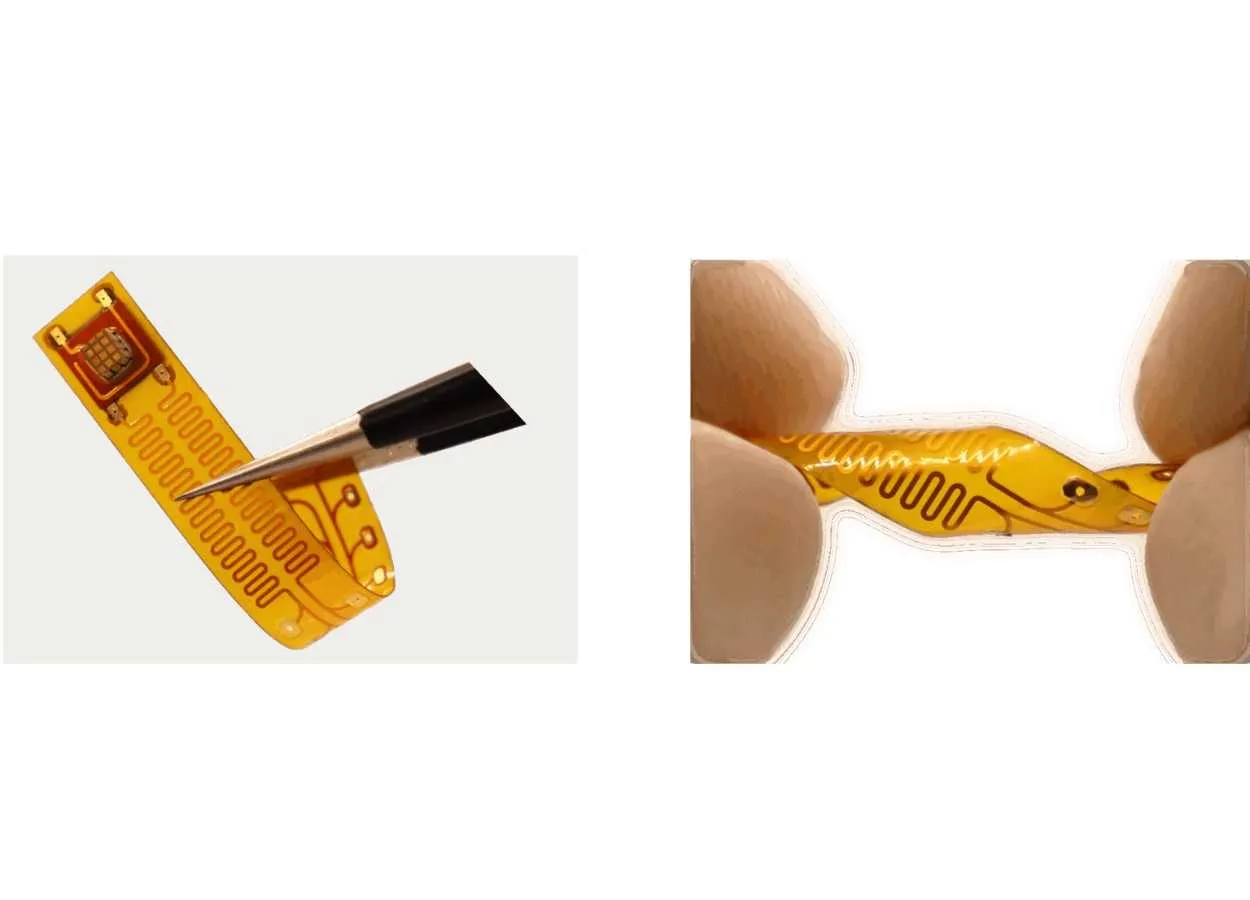Chronic pain is a debilitating condition that severely impacts quality of life, often leading to reliance on opioid medications with their severe side effects and addiction risks. According to the U.S. Pain Foundation, 51.6 million Americans live with chronic pain. For over 17 million sufferers, their chronic pain is high-impact – frequently limiting their life or work activities.
Current implantable electrical stimulators offer an alternative by stimulating the spinal cord to block pain signals from reaching the brain. But these devices come with drawbacks like high cost, invasive surgery, and the need for frequent battery replacements. Now, researchers from the Zhou Lab in USC Viterbi’s Alfred E. Mann Department of Biomedical Engineering, in collaboration with the Jun Chen Group at UCLA, have developed a revolutionary solution: a flexible ultrasound-induced wireless implantable (UIWI) stimulator secured to the spine and designed for personalized, self-adaptive chronic pain management.
This groundbreaking device, detailed in Nature Electronics, represents a significant leap forward in pain therapy. While current spinal cord stimulators can be unwieldy and are hard-wired to batteries, the new device is designed to bend and twist with movement and is powered by a wearable ultrasound transmitter without the need for a battery. It also harnesses machine learning algorithms to customize treatment for each patient. The work was led by Zohrab A. Kaprielian Fellow in Engineering Qifa Zhou, who is also a professor of ophthalmology at the Keck School of Medicine of USC.
At the heart of this innovation is its wireless power supply, eliminating the need for bulky batteries and complex wired interfaces that often require repeated surgeries. The UIWI stimulator receives its energy from an external, wearable ultrasound transmitter (WUT). Ultrasound offers a safe, effective non-invasive method for deep-tissue penetration. The device converts mechanical waves into electrical signals through a phenomenon called the piezoelectric effect. The core of the UIWI stimulator is a miniaturized piezoelectric element made from lead zirconate titanate (PZT), a highly efficient material for converting incoming ultrasound energy into the electrical power needed for stimulation.
“What truly sets this device apart is its wireless, smart and self-adaptive capability for pain management,” Zhou said. “We believe it offers great potential to replace pharmacological schemes and conventional electrical stimulation approaches, aligning with clinical needs for pain mitigation.”
Ph.D. candidate in the Zhou Lab and lead author Yushun (Sean) Zeng said the wireless smart miniaturized stimulator had the ability to produce sufficient electrical stimulation intensity by using ultrasound energy, resulting in a more personalized, targeted and localized treatment.
“This energy-converting type is critical for deep stimulation, as ultrasound is a non-invasive and highly penetrating energy in clinical and medical areas,” Zeng said. “By leveraging wireless ultrasonic energy transfer and closed-loop feedback system, this UIWI stimulator removes the necessity for bulky implanted batteries and allows for real-time, precisely adjustable pain modulation.”
“From a clinical standpoint, incorporating deep learning–based pain assessment enables dynamic interpretation and response to fluctuating pain states, which is essential for accommodating patient-specific variability.” added Zhou Lab Ph.D. candidate Chen Gong, also a lead author on the paper.
The device works by :
• Detecting pain: The system continuously monitors brain recordings, specifically electroencephalogram (EEG) signals, which reflect a patient’s pain levels.
• Harnessing AI to assess pain levels: A sophisticated machine learning model, based on a neural network called ResNet-18, analyzes these brain signals and classifies pain into three distinct levels: slight pain, moderate pain, and extreme pain. This AI model boasts a 94.8% overall accuracy in distinguishing between these pain states.
• Adapting treatment as needed: Once a pain level is identified, the wearable ultrasound transmitter automatically adjusts the acoustic energy it transmits. The UIWI stimulator can then sense the propagated energy and convert it into electrical intensity, stimulating the spinal cord. This creates a closed-loop system that provides real-time, personalized pain management.









